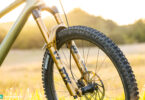E-MOUNTAINBIKE Think Tank #03

After groundbreaking decisions were taken during the last edition of the E-MOUNTAINBIKE Think Tank in Berlin, the convention goes into its third round. 12 industry representatives gathered in the E-MOUNTAINBIKE headquarters in Leogang to attend the third E-MOUNTAINBIKE Think Tank and discuss current trends and new challenges.
E-MOUNTAINBIKE Think Tank – Day 1
E-MOUNTAINBIKE founders Max-Philip and Robin Schmitt opened the event with an overview of the developments since the last gathering six months ago, during which was decided that the Think Tank represents a neutral platform for strategies, networking and exchange for both the industry and the magazine itself.
As the Think Tank has actually moved things forward, the main focus was on the editorial highlights of the past months. The most important topics were and still remain education, safety and anti-tuning.

Tuning
Thanks to an update of our frequently read tuning article, we reached more than 25.000 readers since February this year, who wanted to inform themselves specifically about tuning issues. Overall, the “San Vigilio Protocol” — the result of our first Think Tank – sharpened the awareness among industry and users, as shown by an official statement from the ZIV, the German bike industry association.
Guidance
E-MTBs appeal to an extremely broad target group. In order to match all the different levels of information and knowledge amongst users, the E-MOUNTAINBIKE Magazine aims to cater for all requirements to give their readers a clearer overview. As our readers-survey clearly shows, brand-awareness and brand-popularity in this market segment differ from those in the traditional MTB sector.

Through revised test requirements, our editorial team will address the needs of less sport-oriented users and newcomers who are looking for a bike that is mainly intended for use on gravel paths and light off-road use, a two wheeled equivalent of an SUV. In the next season dedicated comparison-tests for this category will also be released.
Education
In-lab and real-life range measurements have moved the whole industry. The E-MOUNTAINBIKE Magazine has published their own article regarding lab-data, which has earned very positive feedback from the industry. This is supposed to avoid the sort of misguided development, which accepts test procedures remote from practical applications as a foundation for the development of new products, and also wants to prevent readers from using erroneous parameters and half-truths as their only buying guidance.
Safety
Finally, the safety-issue was addressed mainly focusing on the specifications of last year’s bike models. Luckily a healthy exchange between the media and manufacturers is showing encouraging results, which means that safety-compromising components are becoming less frequent on current E-MTBs models. The E-MOUNTAINBIKE Magazine has always denounced the danger of under-dimensioned components, addressing this very topic with a specific article and integrating this concern into all relevant bike tests.

After a short presentation, in which manufacturers who recently joined the Think Tank disclosed their expectations, all participants went for a group-ride, the perfect chance to test new products, exchange experiences and do some quality networking.
Readers Survey 2017
At the end of the first day, all Think Tank participants were given an exclusive insight into the results of the recent E-MOUNTAINBIKE readers-survey, which included 8.124 participants. During a cosy BBQ results of the reader’s survey and other current topics were discussed passionately until late into the night. Apart from the above-mentioned facts, participants were also showed exclusive evaluations including brand recognition, countries and purchase prices, split data on brand popularity, customer satisfaction, bike ownership and purchase intent.



E-MOUNTAINBIKE Think Tank – Day 2
The second day of the E-MOUNTAINBIKE Think Tank was entirely focused on trends and challenges, which all participants outlined and debated passionately – nonstop until noon. The following top-trends and challenges were discussed on this occasion.
Diversification
On the subject of diversification, we discussed the differentiation of E-MTBs in comparison with classic MTBs and motorbikes. It’s evident that the E-MTB segment is steadily growing and that different products are created and aimed at various target groups.
Alongside comfort-oriented E-MTBs, which are predominantly designed for fire roads, a new category of sporty and aggressive E-MTBs for more demanding off-road riding is developing steadily, aimed at both experienced mountain bikers and other types of riders such as motocrossers.
Safety and optimisation
The E-MTB niche is growing, the bikes are developing fast and E-MTB specific components are getting more popular. Unfortunately, they’re currently failing to satisfy relevant price points and are still leaving much to be desired. Even though 1x drivetrains seem to be now widely accepted, actual tests show how current shifting-concepts are still failing to provide a satisfactory solution – even on our short Think Tank ride we had to deal with some serious failures.


The tire and wheel-size issues are still widely debated. Particularly exciting is the role of 29” wheels, which are becoming more and more popular amongst classic mountain bikers and are also increasingly being used in the E-MTB sector. Currently, the market is still dominated by 2,8″-wide plus-sized tires, which are also very popular amongst our readers, but some brands are working on bikes with both mixed wheel sizes (27,5+ rear, 29 front) and pure 29ers.
This discussion triggered yet another question: To which extent is the average E-MTB buyer grappling with issues such as wheel-size?
As with the subject of diversification, we have to assume that some buyer groups will be dealing with these issues whilst others will find them totally irrelevant.
This assumption was already confirmed on the previous day when we gathered a bunch of E-MTB riders with totally different skill-sets and knowledge to ride on the trails around Stuttgart. From the hardtail rider with full-face helmet and high-viz vest to the E-MTB expert with a deep knowledge of gear ratios and motor failure codes — and an Alps crossing under his belt.
E-bike Light – is it time for e-road-bikes?
Small, light motors open many doors and new possibilities for the development of an all-new range of E-bikes that are very similar to non-motorized bikes. This would also allow road and gravel bikes to benefit from the E-trend without losing their main and most crucial riding characteristics. This is creating a new sub-category in the E-bike market, one that differentiates clearly from other current products. Also, Bavarian motor manufacturer FAZUA was with us for the first time, firing the debate with first-hand know-how and explaining their concept to all of the participants.

Design
As far as E-MTB design goes, integration is the latest mega-trend, hugely influencing the current year’s models. In the first place, battery and motor integration ensure a much cleaner look and added technical advantages. In the front triangle of many bikes, there is now room for a bottle cage, additional batteries and other add-ons. This is also calling for new integration-based innovations. The new E-MTB look, however, has also an impact on perception and social acceptance and lays the foundations for future developments.
Big Data
The connectivity of E-bikes is one increasingly relevant topic. Through the power supply and integrated sensors, not only E-bikes can record and process a large number of riding data, but also supply the power needed for other electronic components. “First systems such as Haibike’s eConnect are already able to provide riders with a variety of functions such as theft protection, automatic emergency calls or route recording” explains product manager Christian Malik.

Long-term riding data evaluation is another exciting field. This gives manufacturers a comprehensive insight into the usage behaviour of their product and offers them a unique chance to optimize this very same product. However, there is another question, which is how much technology an E-MTB should bear.
Racing and events
The topic of race formats for E-MTBs had already been discussed in the first edition of our Think Tank a year ago. Since then a lot has happened and events like the Shimano E-MTB Experience or the Bosch eMTB Challenge have proved that this sort of events attracts a lot of interest from the public; however, uncertainty over economic benefits and the immense effort are still raising questions.


This sort of event feels more like an organized joy-ride rather than a classic race, which actually seems to be more in line with the usage behaviour of a typical E-MTB rider.
Yet, one important question goes hand in hand with this type of “fun events”; will E-MTB racing ever have a future as a “spectator sport”? Race formats based on MTB enduro events don’t appear to meet the necessary requirements. That’s why mass-start races in the style of the Erzberg Rodeo and other motocross formats were thoroughly discussed as possible role models; opinions amongst Think Tank participants differ.
Leasing – Jobrad & Co (cycle to work scheme)
High acquisition costs are still a major setback for many potential buyers. Leasing could be one solution, specifically those leasing options that go through the employer and with the support of portals like Jobrad.org. This option offers customers considerable savings due to the organization’s tax advantages.
For dealers and manufacturers, on the other hand, the leasing option could be an easy way to secure customer loyalty and regular purchases, typically based on a 3-year basis. The response from Think Tank-members to this topic was positive throughout, many see the potential of such financing models as an important building block for the future of e-mobility.
Tourism
E-MTBs play an increasingly important role in the tourism sector, especially in big winter-sports destinations.
Large-scale cooperation between the industry and tourist boards appear to be difficult beyond local realities, but we also experienced some first success stories.
A strong infrastructure of rental and charging facilities as well as suitable routes would build a strong foundation, however, the responsibilities are still unclear and a holistic concept is missing.

Legal frameworks
Another central topic of the Think Tank was the legal framework and its avoidance by means of tuning. As in the first two rounds of our Think Tank, once again industry representatives took a clear stand against tuning. The legal top speed of 25 km/h and restricted trail access in some countries such as the USA or Sweden are a thorn in the side of many, yet a repeal of these laws is not foreseeable.

In order to avoid further restrictions on the existing regulations, we must keep our stance against illegal motor tuning. Also, the technical solutions offered by motor manufacturers play an important role, as does the educational work with customers regarding this topic.
Feedback and outlook
At the end all participants were given the opportunity to voice their opinion on the event and share their wishes and expectations for future Think Tank meetings. At large a very positive balance was drawn and the Think Tank event has found the right format in its third edition. Networking and debating with like-minded people distant from hectic fair-dates and the endless supply of food for thought were welcomed as a positive result.
The long discussions and the realization of how much has been achieved in the 10 months since the first E-MOUNTAINBIKE Think Tank, proves that there is high demand for an exchange. Therefore we decided that meetings on a half-yearly basis would be very useful and we agreed to focus the next think tank on a specific topic – and participating experts will provide valuable input.
Did you enjoy this article? If so, we would be stoked if you decide to support us with a monthly contribution. By becoming a supporter of E-MOUNTAINBIKE, you will help secure a sustainable future for high-quality cycling journalism. Click here to learn more.
Words: Photos: Christoph Bayer








